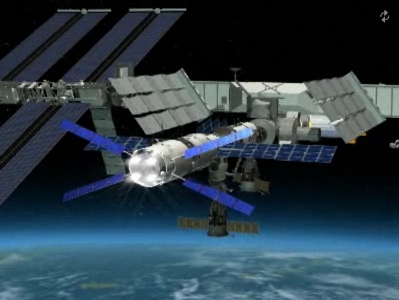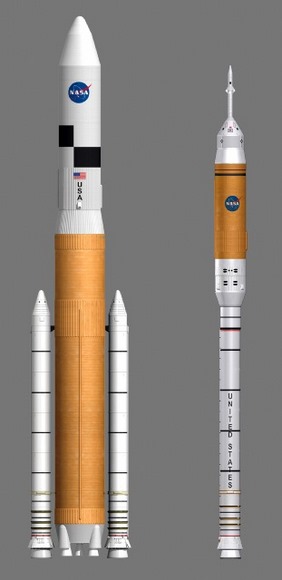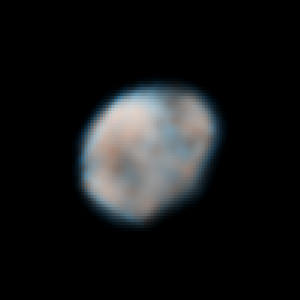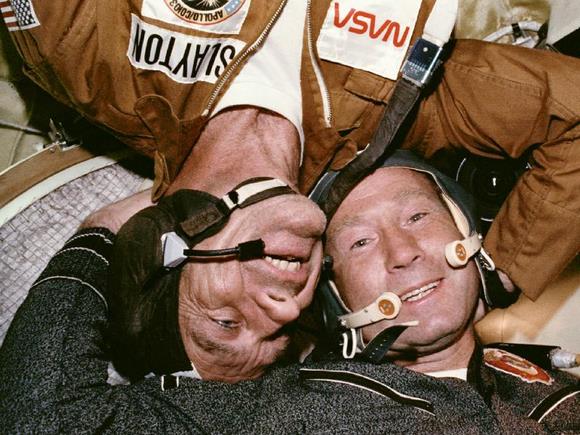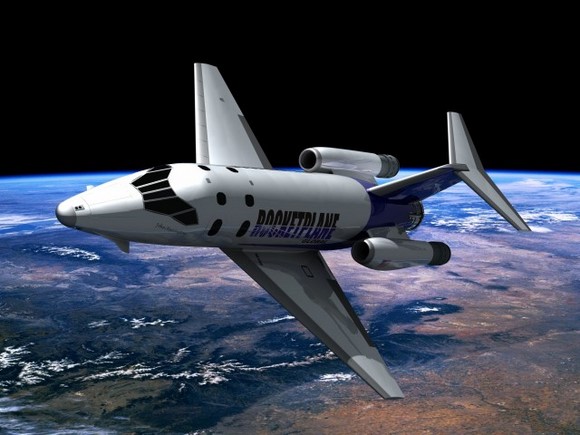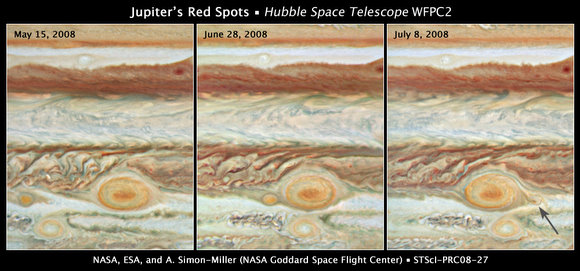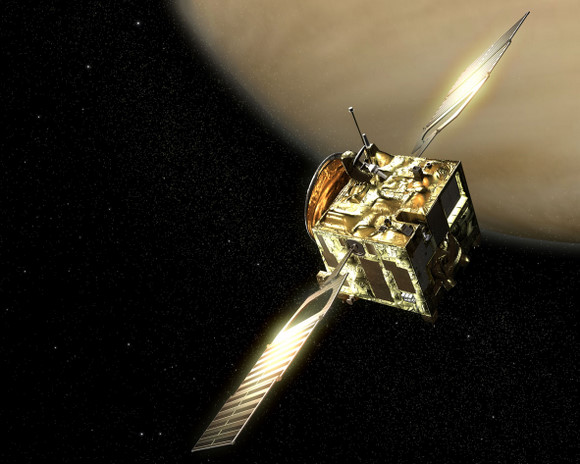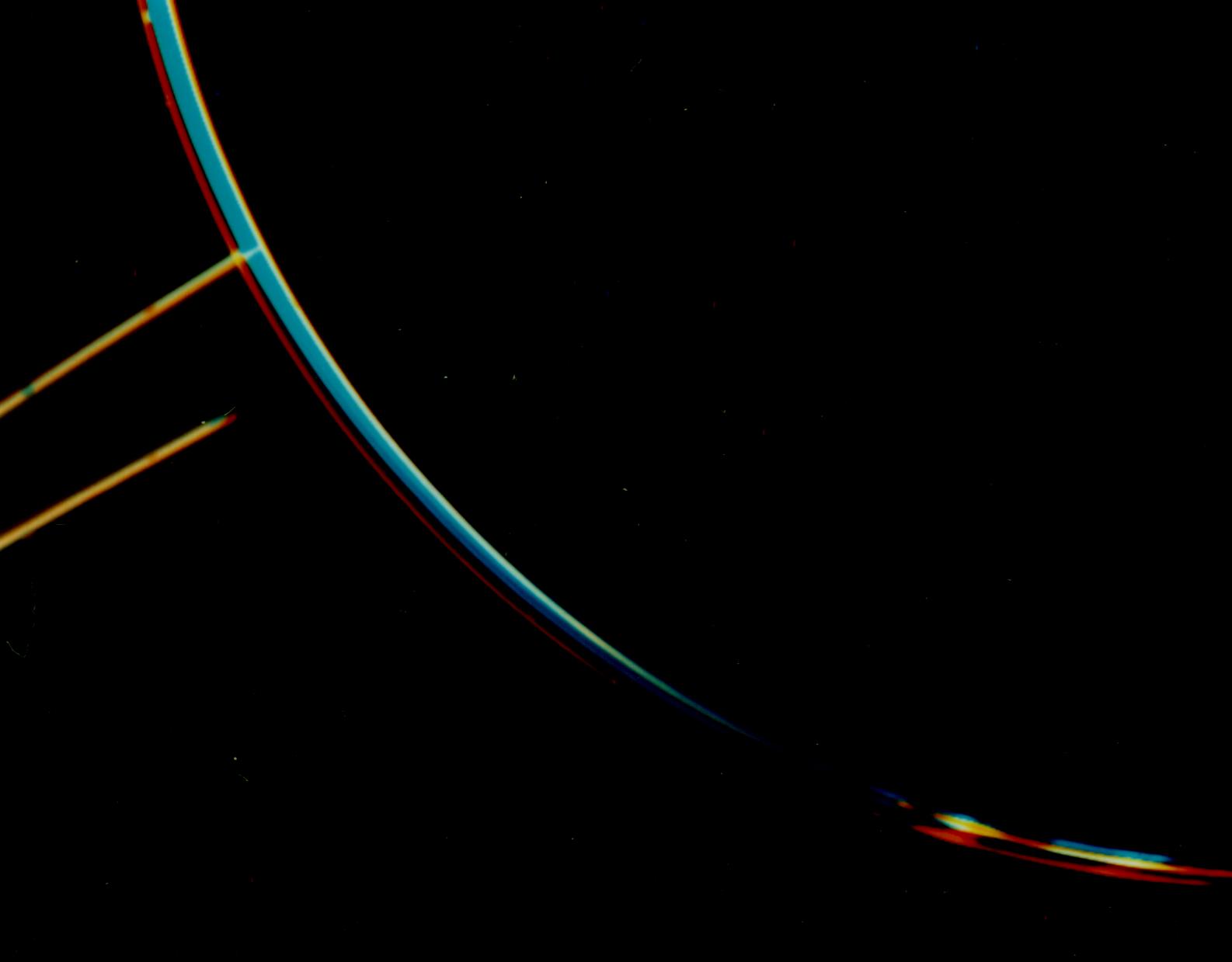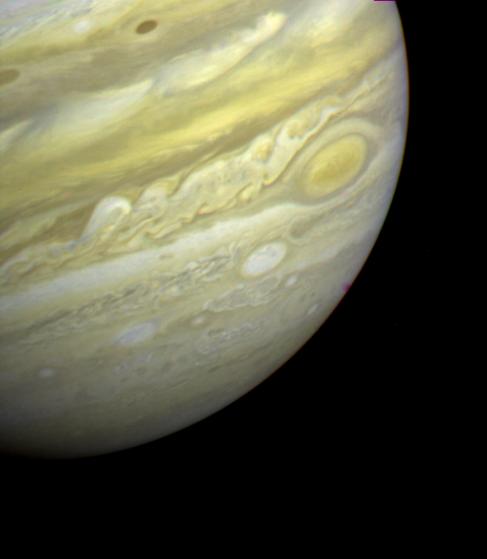[/caption]
The International Space Station (ISS) is the jewel in the crown of human ingenuity and a testament to the incredible engineering mankind is capable of. The modular human outpost began construction in 1998 and it is hoped the final configuration will be complete by 2010. Apart from orbiting the Earth and the occasional re-boost by the docked Automated Transport Vehicle (ATV) “Jules Verne,” the ISS is going nowhere in a hurry. But wait a minute, isn’t that what the ISS is all about? Isn’t it simply an orbital science outpost? Well it is, but could it be something a bit more dynamic? Some critics cite the ISS as the most expensive waste of time the international collaboration of space agencies have ever been committed to; after all, who needs more zero-G experiments?
Solution: Attach a rocket and a steerage system and behold, we have a huge interplanetary transport vehicle, capable of travelling to the Moon and possibly to Mars. Who needs the Constellation Program anyway…
In an entertaining Washington Post article, Michael Benson discusses something I’ve never thought about. Rather than letting the ISS gradually fade away to a perpetually orbital retirement and eventual re-entry, why not do something a little more exciting with the football pitch-sized manned outpost? Forget more zero gravity experiments, stop throwing boomerangs around (yes, it came back), abandon the thousandth test on sprouting barley (although the beer might be good), install another toilet and let’s get serious. Upgrade the ISS into a full-blown spaceship and let’s begin exploring the Solar System in style!
So what’s the logic behind this conclusion? The ISS has 15,000 cubic feet of habitable space in 10 modules. It has ample working and living areas with scope for more. It can repair itself (using the Canadian robotic arm, controlled from inside the craft). This creates a more than comfortable space habitat for five permanent crew members plus the occasional guest. The space station has been billed as a “stepping stone” for future missions to the Moon and beyond, but those plans will probably not see the light of day in the ISS’ lifetime. Besides, as the Constellation Program shows, “stepping stones” are not needed; NASA is favouring the direct flight route to the Moon and Mars, stopping for lunch at the ISS isn’t necessary (besides, it’s a waste in fuel and resources).
Also, space stations are not new. The Russians have had a series of seven manned outposts (from the 1971-2001 Salyut and Mir programs) and the US had the 1973-79 Skylab station. There is a huge wealth of data available from the vast numbers of experiments that have been carried out, many present-day ISS “experiments” often appear to be slightly frivolous (i.e. the afore mentioned boomerang tests) when compared with the pioneering observations of the human body in space.
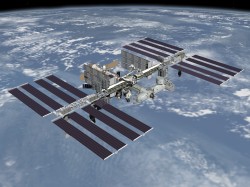
All this said the ISS would be a great candidate for interplanetary travel. Although it might look a little ungainly, in the vacuum of space there’s little concern for aerodynamics (besides, for a station orbiting at a speed of 17,000 miles/hr, its shape is hardly holding it back!). It’s a tried and tested space-worthy candidate. Plus, the Constellation Program would fit right in. Perhaps the Orion module could be integrated into the station, and the engines from the powerful Ares rocket could be attached for propulsion. If something a little gentler is required, ion propulsion engines are becoming more and more sophisticated. If you’re thinking all of this is fantasy, well it isn’t. The station depends on “re-boosts” from docked resupply ships (such as Soyuz and the ATV) to occasionally increase its orbit. Back in April, Jules Verne pushed the 280 tonne station nearly three miles higher in only 12 minutes. This was achieved by using the small thrusters on the ATV; imagine if a larger thrust was achieved. Naturally, there may be structural questions hanging over the subject of thrust, but it seems only a small yet constant force is required for long-term interplanetary missions.
The International Space Station could be the ultimate “mother ship,” where astronauts live, but small planetary missions can detach and land on the Moon or even Mars. Besides, the ISS is set for retirement in 2016, perhaps it could be reborn and refurbished (in time for the realisation of the Constellation Program) into a new class of space vehicle; not a space station, a space exploration vehicle. After all, it needn’t only orbit the Earth…
Original Source: Washington Post

